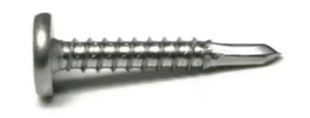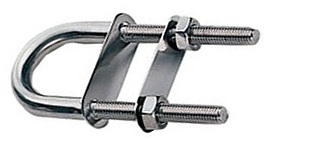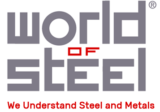Types of Screws, Bolts and Threaded Fasteners
Types of Screws
- Deck Screws

Deck Screws Our deck screws feature a type 17 point (notched point at the tip) to aid in chip removal during thread cutting which allows for an easy installation in wood and composite deck materials. A bugle head and square drive help to eliminate the stripping effect sometimes experienced with other types of drives.
- Hex Lag Screws

Hex Lag Screws Lag screws, also called lag bolts, are large wood screws. The head is external hex and are driven with a wrench. Used for lag together lumber for framing, machinery to wood floors, and other heavy duty applications.
- Self-Drilling Screws Self-drilling screws

Self-Drilling Screws Self-drilling screws have a sheet metal thread with a self-driller cutting (TEK) point to pierce through 20 to 14 gauge metals. The higher the TEK number, the larger the drill point to pierce heavier gauge metals.
- Sheet Metal Screws

Sheet metal screws (SMS) have sharp cutting threads that cut into sheet metal, plastic or wood. They have a fully threaded shank and sometimes have a notched point at the tip to aid in chip removal during thread cutting.
- Wood Screws

Wood screws are partially threaded with large cutting threads and a smooth shank. They are designed to slide through the top piece of wood and tightly pull all boards together.
Types of Bolts
- Hex Head Bolts

Hex Head Bolts: Most common bolt used can be partially or fully threaded. Ideal to drawing two parts tightly together. Example: securing alternator to adjustment bracket.
- Allen Head Bolts

Allen Head Bolts: Used like the hex head bolt, but is designed to have the head fit into a socket and flush with the surface. Example: through-bolts that secure a windlass to the deck.
- Carriage Bolts

Carriage Bolts: Clean low profile bolt head designed to “lock” into place using a square counter sunk head. Requires nut to secure. Example: wooden trailer bunk installation.
- U-Bolts

U-Bolts: “U” shaped bolt with threads on either leg. Ideal for wrapping around one part to secure to another. Example: trailer parts, bow eyes.
- Eye Bolts

Eye Bolts: Single threaded shank with eye head. Great as a through-bolted pad eye. Example: hold down rings for coolers.
- Hanger Bolts

Hanger Bolts: Unique fastener that combines the coarse threads of a lag bolt with the fine threads of a machine bolt. These fasteners are typically installed in wood to provide a threaded stud to secure hardware with washers and nuts. Example: motor mounts, steering system brackets.
There is a wide array of threaded fastener types, including:
- Unified national coarse (UNC)
- Unified national fine (UNF)
- Unified national extra fine (UNEF)
- UNJC and UNJF threads
- UNR threads
- UNK threads
- Constant-pitch threads
